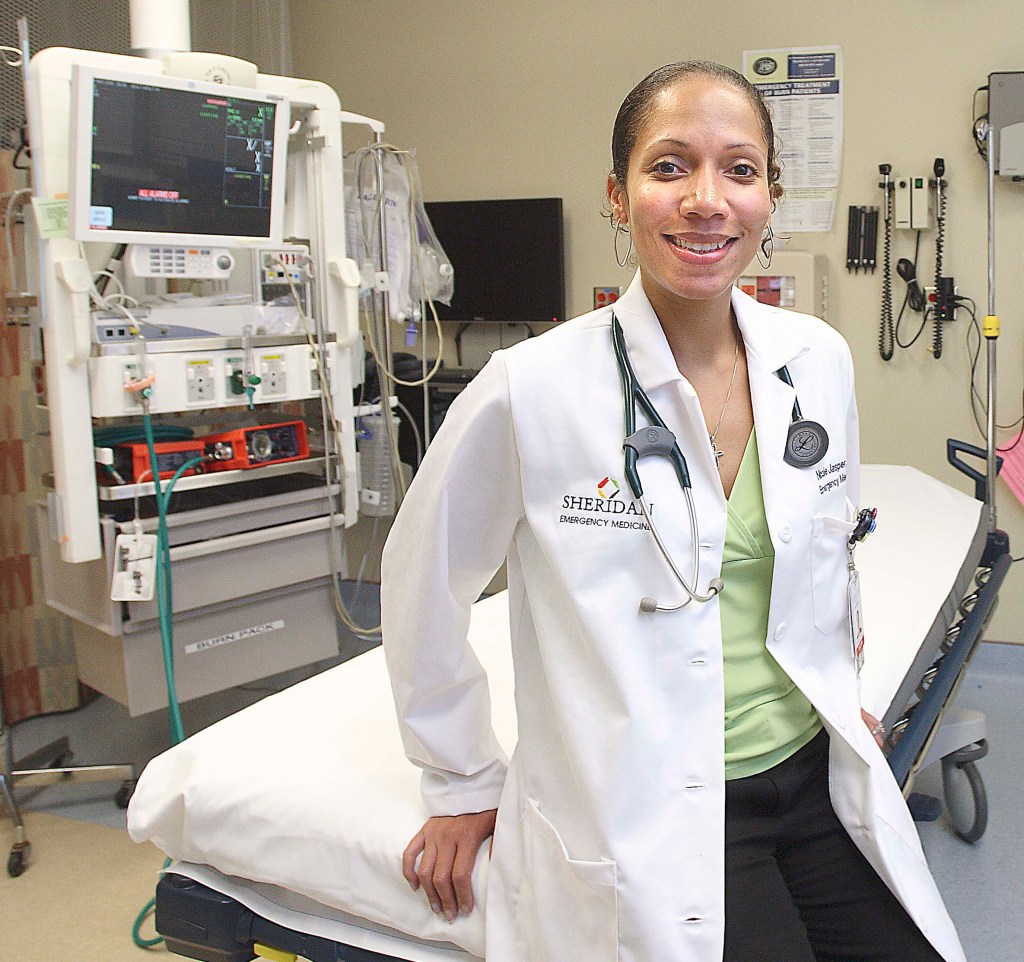Emergency!- Meet the medical director, Dr. Jasper
Published 12:04 am Sunday, May 16, 2010

- Dr. Nicole Jasper in one of the trauma rooms in the emergency room at South Georgia Medical Center.
Dr. Nicole Jasper shares the position of medical director of the Emergency Department with fellow physician Dr. Peters. Both live in Atlanta primarily, and Valdosta temporarily, as SGMC continues to recruit for a full time, permanent director.
Jasper works for Sheridan and is a take-no-prisoners, no-nonsense physician. Her approach to emergency medicine is that the patients’ needs come first, period.
“The patients are the center of what we do. In the time we’ve been here, we’ve seen patient satisfaction increase and we’ve seen an increase in staff morale too. The nurses and ancillary staff are happier because we act as one fluid team and everyone understands that if one part is lagging, then it affects us all. If you have no weak links, you have a happier staff.”
Jasper said all patients are evaluated and then sent to the respective area of the department. Those with minor illnesses, such as colds, do wait longer than those with serious illnesses.
According to Jasper, a typical emergency room physician is an “adrenaline junky,” and as such, she chose to do her three-year residency at Grady Memorial Hospital in Atlanta, the infamous public hospital that sees all manner of trauma cases 24/7.
“I figured that anywhere I went after Grady would seem easy,” she said.
She also spent time in New York at Kings County Hospital, a public hospital that was the first in the country to be a Level 1 Trauma Center.
“It was more confusing and a more chaotic environment,” Jasper said. “When I came here to Valdosta, I thought it would be tame but it isn’t.”
With I-75 comes trauma cases from vehicle accidents, in addition to the occasional shooting and stabbing victims.
“I didn’t expect the diversity but it’s allowing me to keep up my skills,” she said.
Working with members of the medical staff is challenging at times, says Jasper, but “I’m working on the relationships. We’re all here for the same reasons, and that’s to help our patients.”
Jasper said her most memorable case since coming to SGMC was a small child with serious medical issues. “Here she was getting sicker and sicker, and all her tests kept coming back normal. I noticed that she didn’t look like either of her parents and she seemed to have some sort of genetic abnormality, but the parents said they had never been told that before and she had never had any type of testing.”
Jasper said the child was so sick she had to be intubated before being sent to Shands in Gainesville. She and her staff called to check on the young girl, and “it turns out she had an imbalance in her amino acids, which is treatable, and today she’s a healthy child,” she said.
Surprised that an ER doctor would have the time to check on patients once they are transferred elsewhere, Jasper said the staff does it fairly often, particularly if the patient is extremely sick or if they are suffering from something unusual.
Although the plethora of television shows about emergency rooms can give patients a skewed idea of what it’s like, Jasper said one thing that shows like “Trauma: Life in the ER,” has done is to give patients a better idea of how hectic and unyielding the job can be.
“We’re not sitting here waiting on one patient. This is a very intense job and physicians can easily burn out.”
For Jasper, the ability to affect patient care at SGMC is highly rewarding. She maintains her contact with patients, devoting 60 percent of her time to clinical duties and 40 percent to patients, and even though she has no plans to move to Valdosta full-time, “I hope to stay and have an active part of the operation of this ER.”




